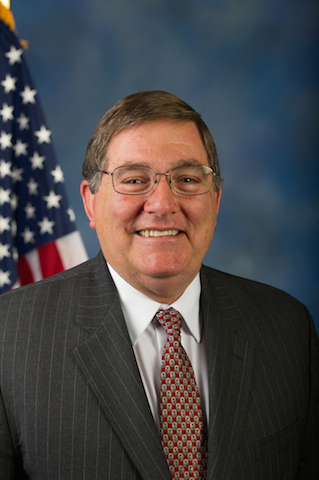Office of the National Coordinator for Health IT (ONC)
See the following -
Public APIs Getting Ready For Prime Time
At the American Medical Informatics Association's annual symposium today, developers and backers of public application programming interfaces talked about how the standard could speed interoperability with add-on apps to enterprise EHRs, and help make those bulky systems more nimble...
- Login to post comments
RAIN Live Oak Demonstrates New Standard for Healthcare Provider Directories
Last month, RAIN Live Oak, a member of the California Association of Health Information Exchanges, participated in the Integrating the Healthcare Enterprise (IHE) Connectathon 2015 to demonstrate the IHE Profile for Healthcare Provider Directory (HPD). Participation in the Connectahon, a week-long interoperability-testing event, was a significant opportunity for the advancement of the HPD standard, which supports management of healthcare provider information in a directory structure, and it proved to be an undeniable success. RAIN is a participant of the California Trusted Exchange Network (CTEN), which utilizes a federated architecture for Directory Services using HPD specifications. Read More »
- Login to post comments
Rep. Burgess' Office Releases Draft Interoperability Bill for Discussion
 The office of Rep. Michael Burgess, MD (R-TX) released a draft of the interoperability bill that they have been working for the past several months on Friday. Rep. Burgess, one of the few physicians in Congress, has been working very hard with his staff to come up with legislation that can fix the current Health IT "lock-in" crisis. This is a bipartisan effort that has full backing from the top leadership in Congress. The staff is seeking input from the Health IT community on the draft bill. Burgess's office will take comments on the draft through March 13. Rep. Burgess' staff was kind enough to provide Open Health News with a copy of the draft legislation. We have posted the entire draft bill as is below and will be writing some our thoughts over the next few days.
The office of Rep. Michael Burgess, MD (R-TX) released a draft of the interoperability bill that they have been working for the past several months on Friday. Rep. Burgess, one of the few physicians in Congress, has been working very hard with his staff to come up with legislation that can fix the current Health IT "lock-in" crisis. This is a bipartisan effort that has full backing from the top leadership in Congress. The staff is seeking input from the Health IT community on the draft bill. Burgess's office will take comments on the draft through March 13. Rep. Burgess' staff was kind enough to provide Open Health News with a copy of the draft legislation. We have posted the entire draft bill as is below and will be writing some our thoughts over the next few days.
Report on ONC’s Working Session on Patient Identity and Matching
 On Monday, August 31, I attended the final Working Session on Patient Identity and Matching. This virtual event was hosted by the Office of the National Coordinator for Health IT (ONC). This Working Session was a followup to an earlier session back in June 2020. The event last week had over 300 attendees and covered a wide range of topics and technologies related to patient identity and matching. These ONC Working Sessions are being driven by requirements that are part of the 21st Century Cures Act as well as a Congressional request from December 2019 to continue to "...evaluate the effectiveness of current [patient identity and matching] methods and recommend actions that increase the likelihood of an accurate match of patients to their health care data." Much of the focus of this study has been on whether a national patient identifier should be implemented in the US.
On Monday, August 31, I attended the final Working Session on Patient Identity and Matching. This virtual event was hosted by the Office of the National Coordinator for Health IT (ONC). This Working Session was a followup to an earlier session back in June 2020. The event last week had over 300 attendees and covered a wide range of topics and technologies related to patient identity and matching. These ONC Working Sessions are being driven by requirements that are part of the 21st Century Cures Act as well as a Congressional request from December 2019 to continue to "...evaluate the effectiveness of current [patient identity and matching] methods and recommend actions that increase the likelihood of an accurate match of patients to their health care data." Much of the focus of this study has been on whether a national patient identifier should be implemented in the US.
- Login to post comments
Senate hearing focuses on potential delay of MU Stage 3
Despite the federal government's best intentions to create an interoperable healthcare landscape, the Meaningful Use program has yet to truly prevent information blocking by both providers and vendors, legislators on the Senate's Health, Education, Labor & Pensions committee declared at a hearing Thursday. To that end, they led a discussion focused on potentially delaying Stage 3 of the program, proposed in late March.
- Login to post comments
Stakeholders To ONC: No One Architecture Perfect For EHRs, Data Sharing
Interoperability is a major part of Stage 3 of Meaningful Use, but the timeframes may be too short to transition from current Consolidated Clinical Document Architecture (C-CDA) used in Stage 2 to the application program interfaces (APIs) and proposed HL7 Fast Healthcare Interoperability Resources (FHIR) Standard for Stage 3, according to vendors and stakeholders speaking at a recent joint Health IT Policy and Standards Committee listening session...
- Login to post comments
Study: EHR-Related Safety Issues Linger Long After Implementation
Patient safety issues stemming from electronic health record systems continue long after implementation, according to a new study published in the Journal of the American Medical Informatics Association, Modern Healthcare reports...
- Login to post comments
Success Of Blue Button Initiative Tied To MU Program
The Office of the National Coordinator for Health IT this fall will launch a national campaign to boost consumer use of Blue Button technology to securely access their health records electronically...The national Blue Button campaign, which runs from Sept. 15 to Oct. 6, will include public service announcements posted on partner websites to get the word out on how consumers can access their own health data.
- Login to post comments
Task force summarizes barriers, mulls recommendations to improve EHR data sharing
Patient care coordination is the "key driver" to data sharing, but there are challenges to accomplishing that goal, according to the Health IT Policy Committee's task force on clinical, technical, organizational and financial barriers to interoperability. In its Aug. 25 meeting, the task force summarized information from hearings held earlier in the month regarding obstacles to electronic health record interoperability. Some of the major barriers to interoperability include the cost to interface, the lack of standards, the lack of infrastructure and platforms for interoperability, and the lack of a forum to pull together stakeholders.
- Login to post comments
The Strengths and Weaknesses of the HL7 FHIR Messaging Standard
 It has been several years since we reviewed the progress of the HL7 FHIR standards adoption rate. Health Level Seven's (HL7) Fast Healthcare Interoperability Resources (FHIR) is an emerging standard that has rapidly captured the mind-share of the Health Information Technology (HIT) standards community. FHIR is a standard that enables healthcare data sharing between systems in a manner that is more easily implemented and more expressive than previous HL7 standards such as HL7 Version 2, 3 and Clinical Document Architecture (CDA). Regardless of the version of HL7 standard used, the purpose of these standards is to send clinical data in messages, whether to a party inside or outside your organization. HL7 devises flexible message formats so the receiver of the message can open it up, know who sent it and why, and break it down into understandable segments and data fields.
It has been several years since we reviewed the progress of the HL7 FHIR standards adoption rate. Health Level Seven's (HL7) Fast Healthcare Interoperability Resources (FHIR) is an emerging standard that has rapidly captured the mind-share of the Health Information Technology (HIT) standards community. FHIR is a standard that enables healthcare data sharing between systems in a manner that is more easily implemented and more expressive than previous HL7 standards such as HL7 Version 2, 3 and Clinical Document Architecture (CDA). Regardless of the version of HL7 standard used, the purpose of these standards is to send clinical data in messages, whether to a party inside or outside your organization. HL7 devises flexible message formats so the receiver of the message can open it up, know who sent it and why, and break it down into understandable segments and data fields.
- Login to post comments
Washington Debrief: Is Meaningful Use In Danger?
...More groups weighed-in on the new meaningful use (MU) rule, allowing providers to meet MU through alternative pathways in 2014. Concerns mount over full-year EHR reporting period coming Oct. 1, 2014...
- Login to post comments
Where's The Plan For Interoperability?
Six reasons we will not have health IT interoperability without an architecture...
- Login to post comments
Why Electronic Health Records Aren't More Usable
Federal government incentives worth about $30 billion have persuaded the majority of physicians and hospitals to adopt electronic health record (EHR) systems over the past few years. However, most physicians do not find EHRs easy to use. Physicians often have difficulty entering structured data in EHRs, especially during patient encounters. The records are hard to read because they're full of irrelevant boilerplates generated by the software and lack individualized information about the patient...
- Login to post comments
Why Is Healthcare IT Under Fire?
The Office of the National Coordinator for Health IT has lost several key figures in recent months. An economic report suggests that meaningful use may have been a waste of money. Why is healthcare IT under such duress?...
- Login to post comments
Why Making the Case for Interoperability Standards Is Needed
It's buzzy. It's the fly in the ointment for many and vendors swear it's seriously. just. about. to. gain. traction. Interoperability. Thinking about the topic is daunting itself but for those on the frontlines of care delivery and for patients, its increasingly becoming necessary as the healthcare industry enters into a more networked era. When we last checked in on interoperability, the industry was touting the massive adoption of EHRs...
- Login to post comments